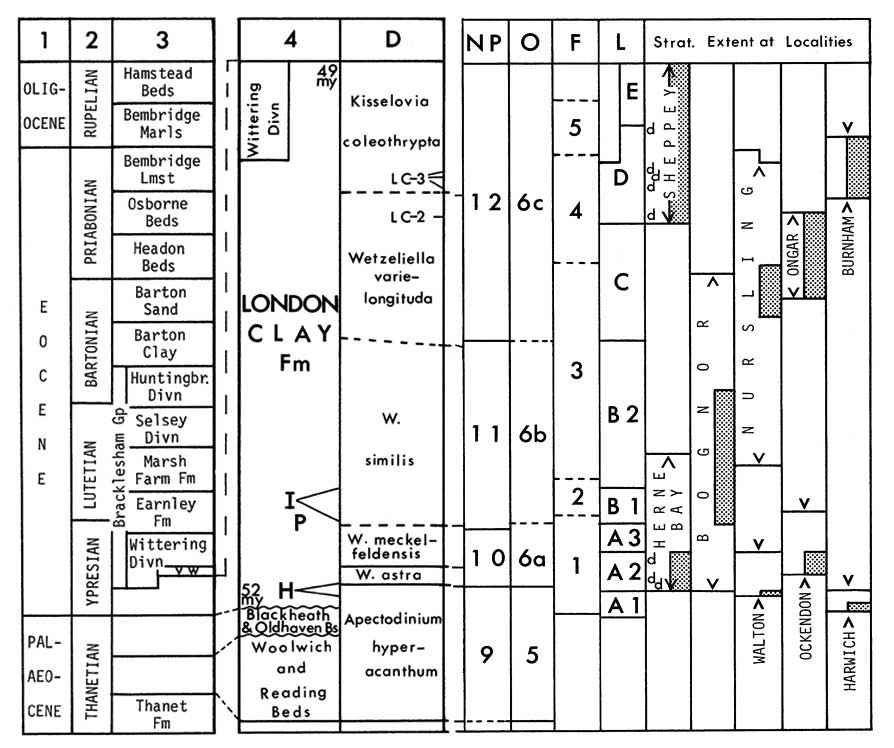|
STRATIGRAPHY - pages 1 - 2 The London Clay is an Early Eocene grey silty clay deposited over a wide area of the London and Hampshire basins. It overlies the Palaeocene Woolwich or Oldhaven Formations and is capped in the Hampshire and south-west London basins by the Middle Eocene Bracklesham group. King (1981) reviewed the stratigraphy and established a lithostratigraphic framework based around five informal divisions (cyclotherms). These, in turn, he divided into lithological members. Division A.1 in London and Essex is a silty clay with ash bands, the Harwich Member. Division A.2, the Walton Member, is a silty clay with silt streaks and lenticular accumulations of vegetable debris. Divisions B,C and D in the London area are silty clay, grading in Division E into a sandy silt facies, the Claygate Beds. followed by the more sandy Virginia Water Formation. In the Hampshire Basin and the south-western corner of the London Basin only Division A to D are represented, part of D and the whole of E are presumed to be diachronous with the lower part of the Bracklesham Group. The apparently featureless cliffs have defied stratigraphers up until quite recently. Davis (1936) attempted to locate the source of the fossils on the beach. He divided the cliff exposure into four beds 'A' - 'D' and concluded that the bulk of the fossils came from bed 'C', some 50 feet up from the cliff base. Unfortunately Davis did not appreciate the effect of the gentle north-westerly dip. He was confused by the two Terebratulina horizons, which he considered a single bed. King (1984) discovered divisions C, D and E in the cliff sections between Warden Bay and Paddy's Point. He divided the London Clay sequence into fourteen lithological units and lettered the cement stone bands for easy recognition. He demonstrated the presence of Claygate Beds - bedded silts and sands- at the top of the London Clay immediately underlying the Virginia Water Formation (Lower Bagshot Beds). |
|
The stratigraphical position of the London Clay Formation and its various biostratigraphical subdivisions |
 |
 |

